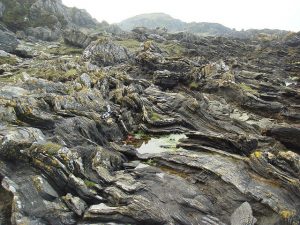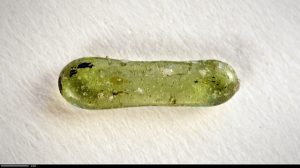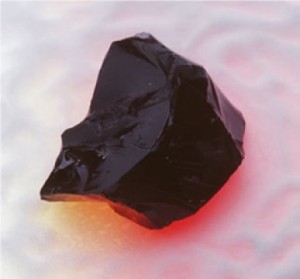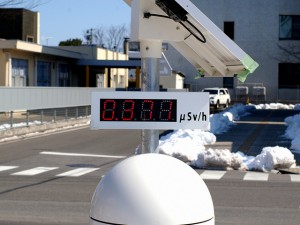Ancient Swedish site may solve nuclear riddle
Researchers may turn to an ancient Swedish fort for advice about how to manage nuclear waste that is currently stored at the Hanford Nuclear Reservation in Washington State. Vikings built a massive stone fort at Broborg, which is north of present-day Stockholm. The fort contained a ring of rock that has survived largely intact.
The ancient Vikings used glass and rock to create sturdy fort walls, and that’s caught the attention of researchers who are looking for a way to safely encase radioactive waste for long-term storage. The glass fortifications are particularly interesting because they’ve weathered 1,500 years of exceptional cold, heavy snows and frost heaving without breaking apart.
Studies of the ancient glass have been heartening. The material contains most of the same metal oxides that the researchers intend to use to immobilize the radioactive waste from Hanford.
The plan is to mix the nuclear waste with molten glass and heat the mixture to more than 2,000 degrees. The molten glass will be poured into stainless steel forms and left to harden. The resulting solids will be stored indefinitely.
The glass-rock walls in Sweden were built by Vikings with significant knowledge of metal work. Large rocks were moved into place and the spaces between them were packed with small rocks that the builders knew would melt at relatively low temperatures. The rocks were set ablaze possibly with the use of accelerants of some type, and the melted rocks fused together with the larger rocks, creating an exceptionally durable fortification. Researchers estimate that the Broborg site was built between 375 and 550 AD.
They’re also conducting longevity tests on the newly created radioactive glass to determine how long the glass will keep the materials from leaching into areas around it, and to determine whether more radioactive material can be safely mixed with the glass. The goal is to safely encase the radioactive waste in glass for 10,000 years or more.
Glassprimer™ glass paint is a specialized glass coating that bonds permanently to glass surfaces. GlassPrimer also makes a glass surface molecular activator that is designed to work with UV-inkjet glass printing processes. Glassprimer™ glass paint can be used in both interior and exterior applications and can help reduce solar heat gain in some applications. For more information about Glassprimer™ glass paint, please visit the rest of our site. If you’d like to purchase Glassprimer™ glass paint, please visit our online store .
Photo Credit: Les Dunford, via Flickr.com




